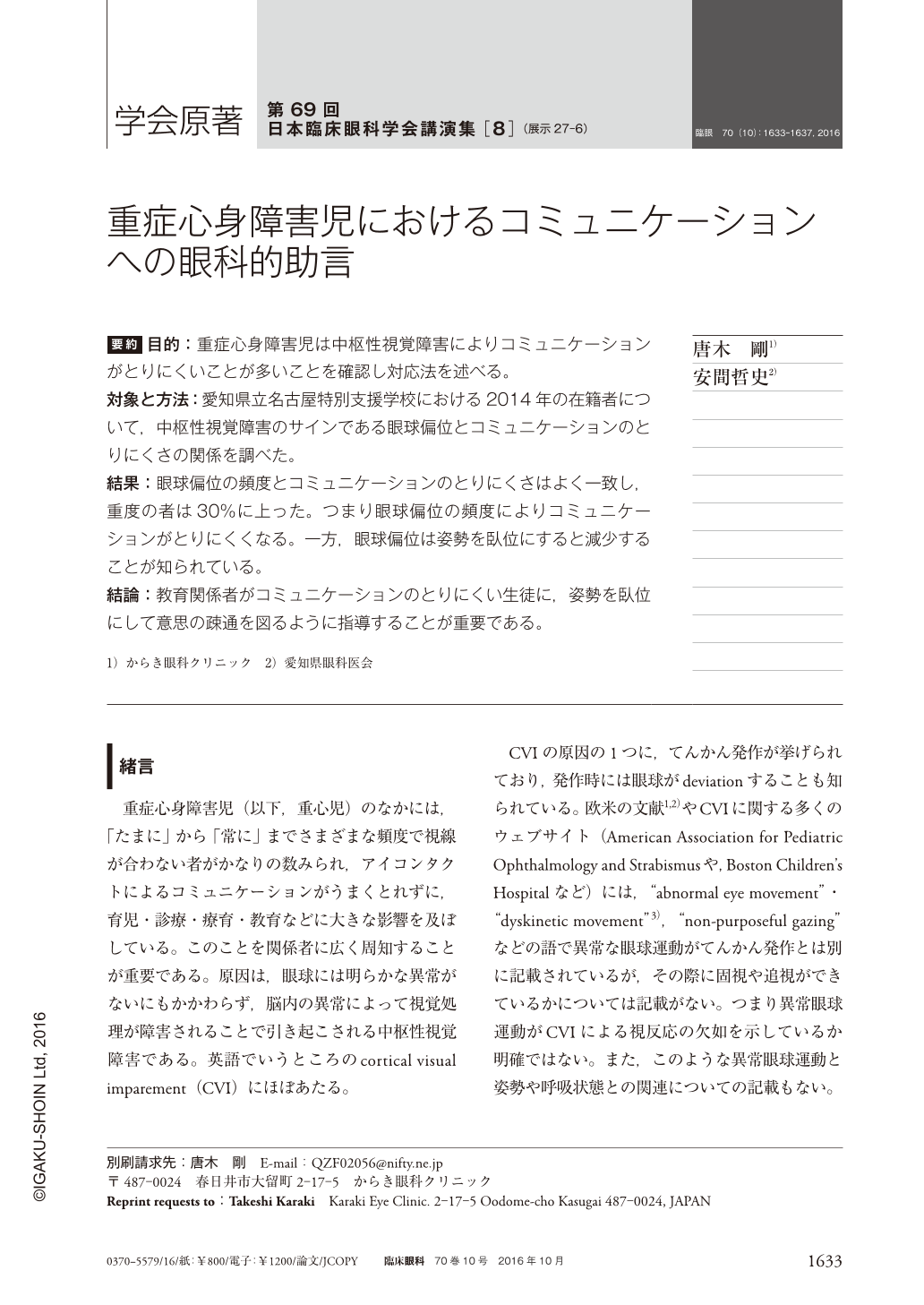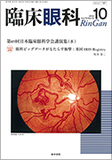Japanese
English
- 有料閲覧
- Abstract 文献概要
- 1ページ目 Look Inside
- 参考文献 Reference
要約 目的:重症心身障害児は中枢性視覚障害によりコミュニケーションがとりにくいことが多いことを確認し対応法を述べる。
対象と方法:愛知県立名古屋特別支援学校における2014年の在籍者について,中枢性視覚障害のサインである眼球偏位とコミュニケーションのとりにくさの関係を調べた。
結果:眼球偏位の頻度とコミュニケーションのとりにくさはよく一致し,重度の者は30%に上った。つまり眼球偏位の頻度によりコミュニケーションがとりにくくなる。一方,眼球偏位は姿勢を臥位にすると減少することが知られている。
結論:教育関係者がコミュニケーションのとりにくい生徒に,姿勢を臥位にして意思の疎通を図るように指導することが重要である。
Abstract Purpose: To propose an improved approach in communicating with physically handicapped children from the standpoint of ophthalmologist in practice.
Cases and Method: We evaluated 174 children who were aged from 6 to 18 years and who attended the school for handicapped children of Nagoya Prefecture in 2014. We paid particular attention to the failure of communication with children by asking the teachers by questionnaire.
Results: Freezed seeing was reported to be none in 37%, slight in 30%, moderate in 27%, and severe in 6%. Failure of the communication was reported to be none in 40%, slight in 29%, moderate in 24%, severe in 6%. As the two reports were almost the same, freezed seeing appeared to be an important cause of lack of communication between the teacher and children. It is to be noted that freezed seeing tends to increase when a patient rises from recumbent to sitting position.
Conclusion: We advise to improve communication with physically handicapped children by making eye contact while the children are in recumbent position.

Copyright © 2016, Igaku-Shoin Ltd. All rights reserved.


